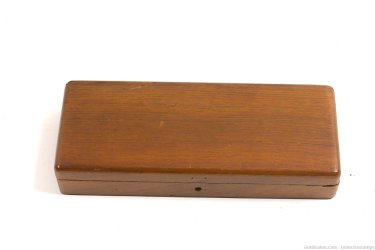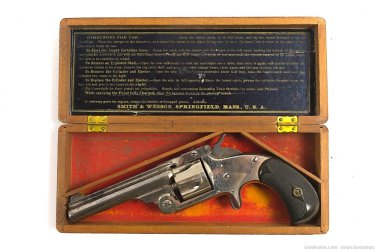- Joined
- Dec 1, 2022
- Messages
- 866
- Reaction score
- 1,405
Hi There,
Does anyone know what wood did they
use to make these cases?
Cheers,
Webb
Does anyone know what wood did they
use to make these cases?
Cheers,
Webb


Hi There,I cannot add anything as I do not know the wood species. The late David Chicoine and I had this same conversation many, many years ago and I believe his response was Basswood. Please do not hold me to this as 40+ years ago is too long for me to hv remember the conversation. What did you have for dinner yesterday?
This description may prove helpful:RIA (expired auction) lists the factory box as Mahogany.
Sure would like to see a historical letter that authenticates these boxes as “shipped” with a gun!
MurphView attachment 753959View attachment 753958
 doogeveneers.com
doogeveneers.com
Hi There,Seems like Mahogany was pretty standard. Photo comparison with Distributor cases the grain and color looks pretty close.
I wonder if they had a wood case for the 3” barrel. They list the 3” as standard but you sure don’t see a lot of them. Like this extremely rare 3” barrel pasteboard box?
MurphView attachment 754063
